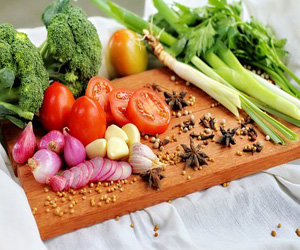


A Taste Of Nostalgia And Culinary Delight
Classic comfort food is like a warm hug for the soul, a culinary journey that transcends generations, and a source of solace during challenging times. These timeless recipes have been cherished and passed down through families, adapting to the ever-changing culinary landscape while remaining steadfast in their ability to provide comfort and nourishment.
At the heart of classic comfort food lies the idea of familiarity and nostalgia. These are the dishes that instantly transport us back to simpler times, evoking childhood memories, family gatherings, and cozy evenings by the fireplace. They are the foods that wrap us in a comforting embrace, offering not just sustenance but a sense of well-being and contentment.
 One of the most endearing aspects of classic comfort food is its ability to bridge generations. These recipes are handed down from parents to children, creating a connection between the past and the present. As children, we often grow up enjoying our grandmother's famous meatloaf or our dad's secret recipe for mac and cheese. As adults, we carry on these traditions, passing them to the next generation, ensuring that the flavors of the past remain alive in our kitchens.
One of the most endearing aspects of classic comfort food is its ability to bridge generations. These recipes are handed down from parents to children, creating a connection between the past and the present. As children, we often grow up enjoying our grandmother's famous meatloaf or our dad's secret recipe for mac and cheese. As adults, we carry on these traditions, passing them to the next generation, ensuring that the flavors of the past remain alive in our kitchens.
The appeal of classic comfort food extends beyond its sentimental value. These dishes are designed to satisfy not only our physical hunger but also our emotional cravings. Take, for example, a steaming bowl of chicken noodle soup. Its rich, savory broth and tender chunks of chicken soothe the soul and provide a sense of well-being. A slice of warm apple pie with a scoop of vanilla ice cream can transport us to a place of pure joy and indulgence. Whether it's the crispy, golden exterior of fried chicken or the creamy, cheesy layers of lasagna, classic comfort food speaks to our hearts as much as it does to our taste buds.
Classic comfort food varies from region to region and culture to culture. In the American South, it might be a plate of buttery, flaky biscuits and sausage gravy. In Italy, it could be a hearty bowl of spaghetti carbonara. In Japan, it might take the form of a comforting bowl of ramen. The diversity of classic comfort food reflects the rich tapestry of global culinary traditions, each offering its unique take on the concept of culinary solace.
As we embark on a delightful journey through the world of comforting dishes in "Classic Comfort Food: Timeless Recipes for Cozy Meals," we find ourselves rediscovering the magic of these age-old recipes. The book is a tribute to the enduring appeal of classic comfort food, celebrating the dishes that have stood the test of time and continue to bring joy and satisfaction to our tables.
In a fast-paced world filled with uncertainties, classic comfort food reminds us that sometimes, the best way to find solace is by embracing the familiar, by savoring the flavors that have been a constant presence in our lives. It's a celebration of tradition, a testament to the power of nostalgia, and a delicious journey that takes us back to our roots, one comforting bite at a time.




Sip Your Way To Health And Vitality
 One of the primary benefits of nutrient-dense refreshments is their ability to deliver a substantial dose of vitamins and minerals. For instance, green smoothies loaded with leafy greens like spinach and kale provide essential vitamins such as A, C, and K, along with minerals like potassium and magnesium. These nutrients play a pivotal role in supporting your immune system, promoting healthy skin, and maintaining proper muscle and nerve function.
One of the primary benefits of nutrient-dense refreshments is their ability to deliver a substantial dose of vitamins and minerals. For instance, green smoothies loaded with leafy greens like spinach and kale provide essential vitamins such as A, C, and K, along with minerals like potassium and magnesium. These nutrients play a pivotal role in supporting your immune system, promoting healthy skin, and maintaining proper muscle and nerve function.
 Health And Nutrition: One of the most significant advantages of homemade cooking is the ability to control the quality and nutritional value of your meals. You have full control over the ingredients you use, allowing you to create dishes that align with your dietary preferences and health needs. This control extends to portion sizes, helping you manage your calorie intake and make informed choices about what you eat.
Health And Nutrition: One of the most significant advantages of homemade cooking is the ability to control the quality and nutritional value of your meals. You have full control over the ingredients you use, allowing you to create dishes that align with your dietary preferences and health needs. This control extends to portion sizes, helping you manage your calorie intake and make informed choices about what you eat.
Customization And Creativity: Homemade cooking is a canvas for culinary creativity. Whether you're following a cherished family recipe or experimenting with new flavors, the kitchen is where you can showcase your creativity. You can adapt recipes to suit your taste, experiment with different ingredients, and personalize your dishes to perfection.
Cost-Effective Dining: Eating out at restaurants can be costly, while homemade cooking provides an affordable alternative.
Cultivating A Healthier Planet And Society
 Local And Seasonal Sourcing: Sourcing food locally and seasonally is another fundamental aspect of the sustainable food movement. This approach is a response to the vast carbon footprint generated by long-distance food transportation. Choosing locally grown and seasonal ingredients reduces greenhouse gas emissions and supports local economies. It also encourages consumers to reconnect with the natural rhythms of their environment and to enjoy a diverse range of fresh, in-season produce.
Local And Seasonal Sourcing: Sourcing food locally and seasonally is another fundamental aspect of the sustainable food movement. This approach is a response to the vast carbon footprint generated by long-distance food transportation. Choosing locally grown and seasonal ingredients reduces greenhouse gas emissions and supports local economies. It also encourages consumers to reconnect with the natural rhythms of their environment and to enjoy a diverse range of fresh, in-season produce.
Reducing Food Waste: The sustainable food movement recognizes the global challenge of food waste. It calls for reducing waste at all stages of the food supply chain, from production and distribution to consumption. By preventing food from going to waste, we conserve resources, reduce the strain on landfills, and address issues of food scarcity and hunger.
Social Equity And Responsibility: Promoting social equity and responsibility is a core value of the sustainable food movement. It encompasses fair labor practices, food access for all, and the eradication of hunger. The movement seeks to eliminate disparities in access to nutritious, affordable food and strives for a world where food is a basic human right, not a privilege.
Healthy Eating: Healthy eating is a vital component of the sustainable food movement. It encourages a diet based on nutrient-dense, minimally processed foods. Sustainable food choices often align with healthier eating patterns, emphasizing fruits, vegetables, whole grains, and lean proteins. This approach not only supports individual well-being but also reduces the burden of chronic diseases on society.
The Foundation Of A Healthy Body
 The Crucial Role Of Minerals
The Crucial Role Of Minerals
Minerals are inorganic substances that our bodies require in relatively small amounts to function correctly. They serve as critical components in various physiological processes and contribute to overall health. Minerals are classified into two categories: macrominerals and trace minerals. Both types are essential, but macrominerals are required in larger quantities.
Macrominerals: The Body's Building Blocks
Calcium: Renowned for its role in bone health, calcium also aids in muscle function, nerve transmission, and blood clotting. Dairy products, leafy greens, and fortified foods are good sources.
Magnesium: This mineral is involved in hundreds of biochemical reactions, including energy production and muscle and nerve function. Magnesium can be found in nuts, seeds, and whole grains.
Sodium: Although excessive sodium can lead to health issues, it is essential for maintaining proper fluid balance, nerve function, and muscle contractions. Table salt is the most common dietary source.
The Quest For The Ultimate Cup
 2. Grinding: The grind size of the coffee beans is crucial. It must be just right, neither too fine nor too coarse, to achieve optimal extraction. Professional-grade grinders allow minute adjustments to ensure precise control over the grind size.
2. Grinding: The grind size of the coffee beans is crucial. It must be just right, neither too fine nor too coarse, to achieve optimal extraction. Professional-grade grinders allow minute adjustments to ensure precise control over the grind size.
3. Water Quality: The quality of the water used is a often overlooked but critical factor. Clean, fresh water with the right mineral content is essential for brewing the perfect shot. It ensures that the flavors in the coffee are accentuated and not masked by impurities.
4. Brewing Temperature: Water temperature plays a fundamental role in extracting the desired flavors from the coffee grounds. Espresso demands hot water, typically between 195°F and 205°F (90°C to 96°C), to fully extract the complex aromatic compounds from the beans.
5. Pressure: Espresso machines apply high pressure, usually between 9 and 15 bars, to force hot water through the coffee grounds. This pressure not only ensures efficient extraction but also creates the luscious crema, the golden layer that tops the espresso.